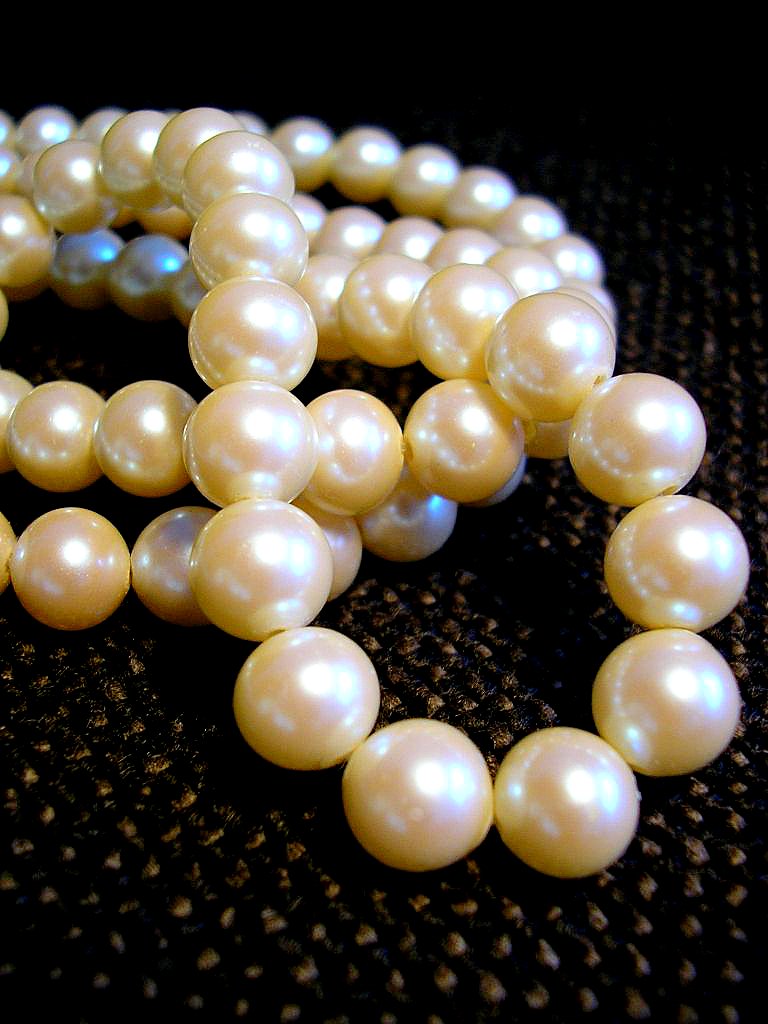Shades of White
Must a bridal gown be snow
white for a formal first wedding?
 |
| Consider the range of shades one sees in white pearls |
It doesn't have to be. The dress can be stark white, natural white, ivory white, or some variation of
white with color accent.
The whitest of whites is only
possible to achieve in synthetic fabrics that can take the process that leaves
the suggestion of a clean blue undertone to the fabric. The stark white color
often compliments is most flattering on women with darker complexions. Those
with lighter complexions look better in softer whites.
Natural white is also sometimes referred to as “diamond” or “silk,”
the whitest shade possible for silk and other natural fibers. In photographs,
this shade will be indistinguishable from stark white.
Cream may either be a natural white or a slightly darker shade
that is usually called “eggshell” or “ivory.”
Ivory is a very
popular choice for brides today, but do hold a swatch next to your face
to be sure it is the shade you want. Ivory generally has a yellow undertone,
which can flatter fair complexions, but can also make some look
sallow.
Champagne a pink undertone for an off-white shade that can lend
a rosy effect to your complexion. You can look at fabrics of a light “rum,” a
color that is also very popular now for the gowns of the sisters and mothers of
the bride and groom.
While white still prevails
as the bridal color, some of today’s wedding gowns feature accents of color in
the trim and on the sash. In selecting the color, be sure you see a swatch of
the actual fabric to be used in the shade you want. Colors can look different
in different fabrics, depending on their sheen and sheerness. As white doesn’t
necessarily mean the color of snow, be sure to choose the shade that is most
flattering to your complexion. The shade may also take on different nuances
depending on the fabric of the gown.
Comments